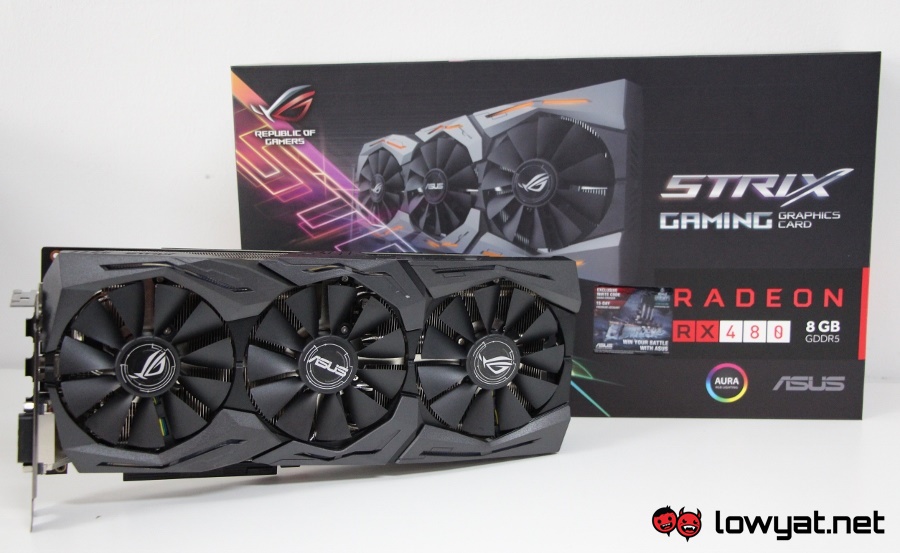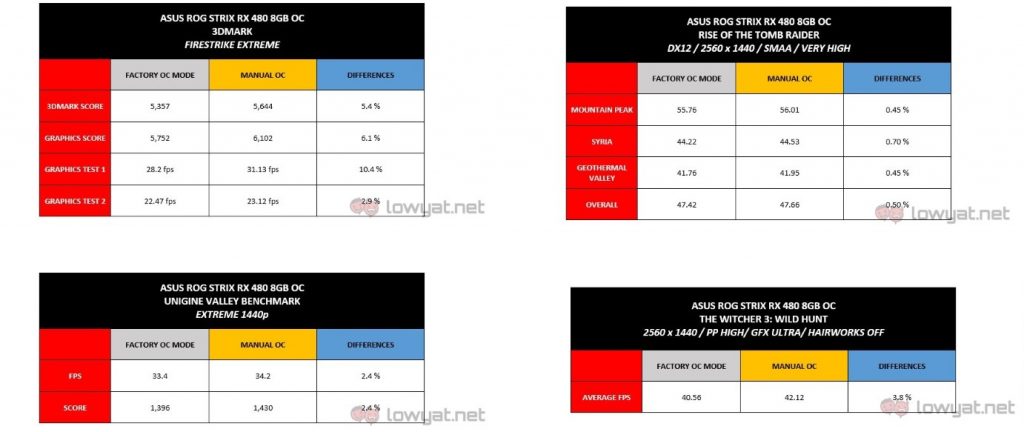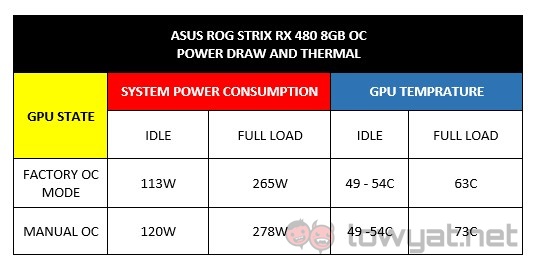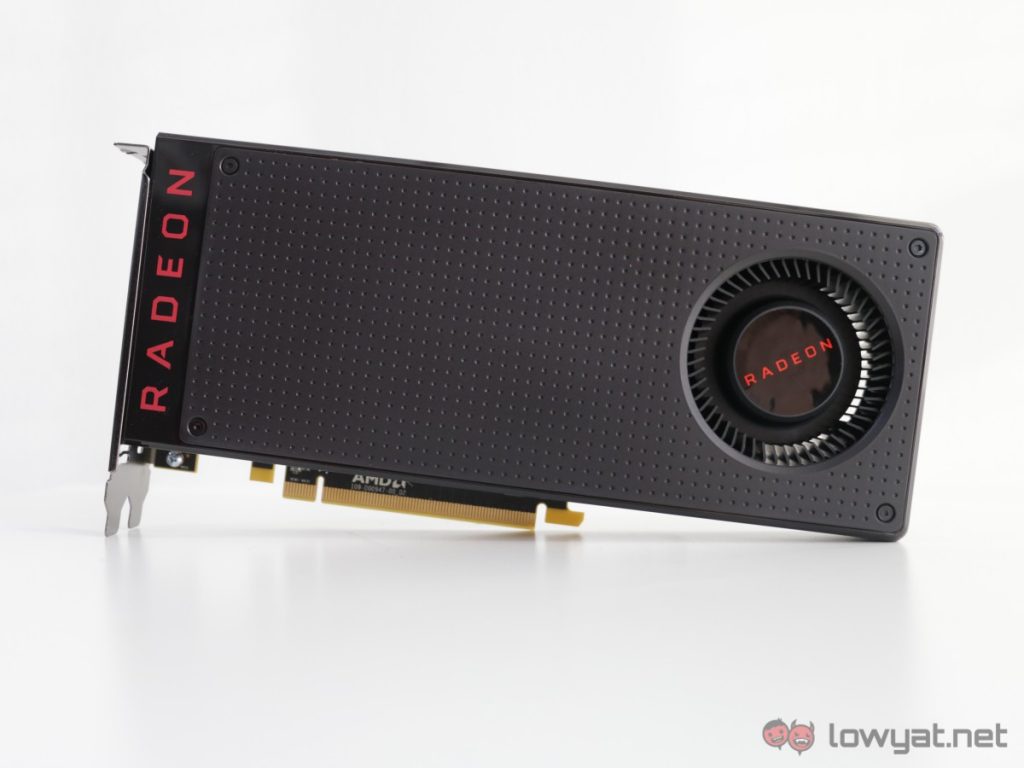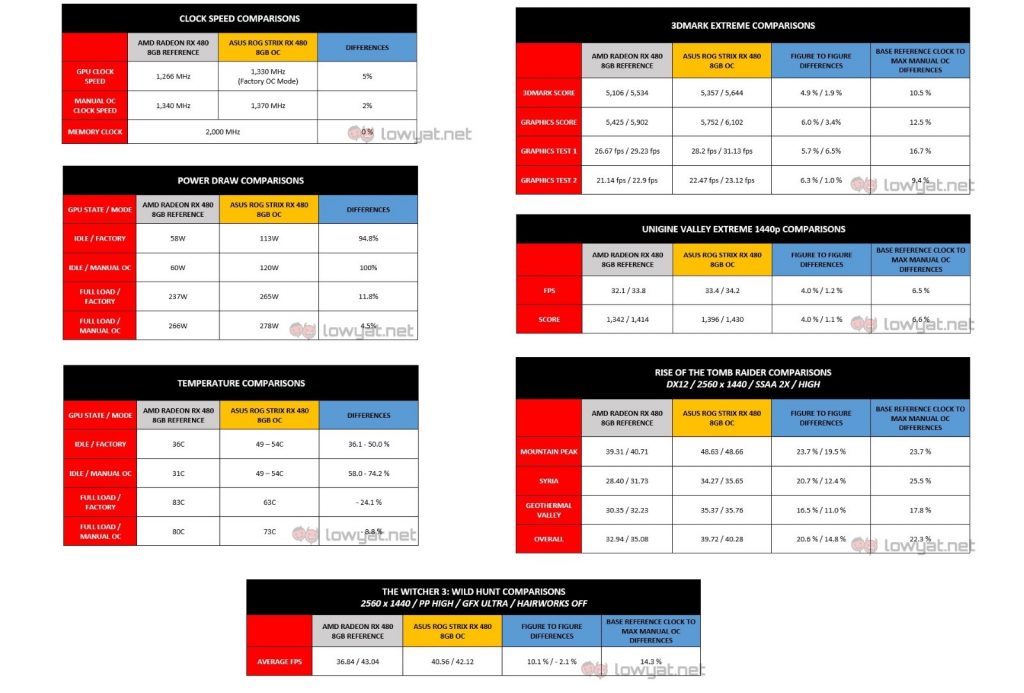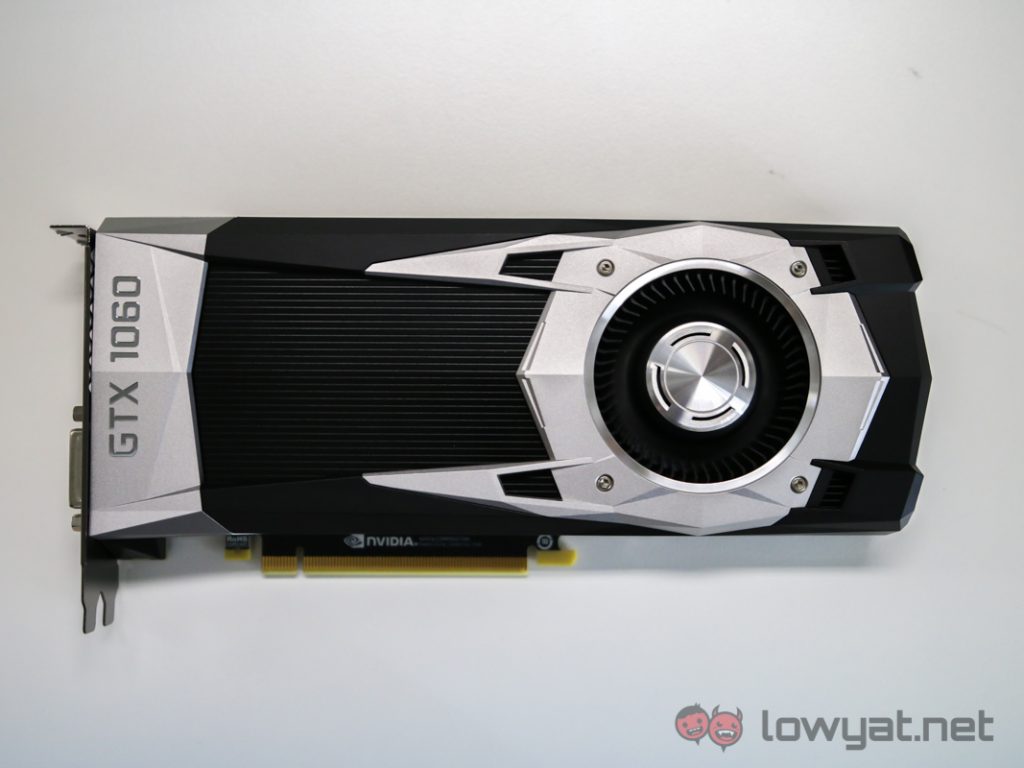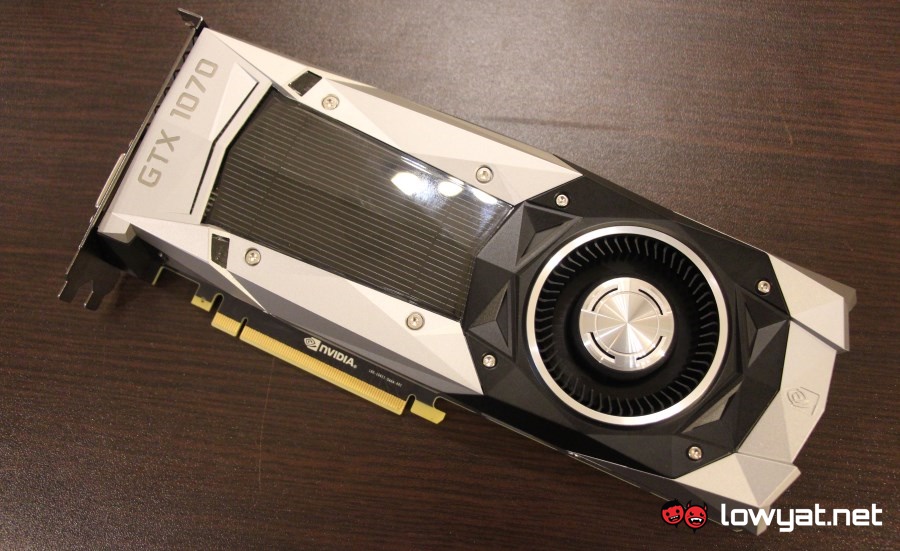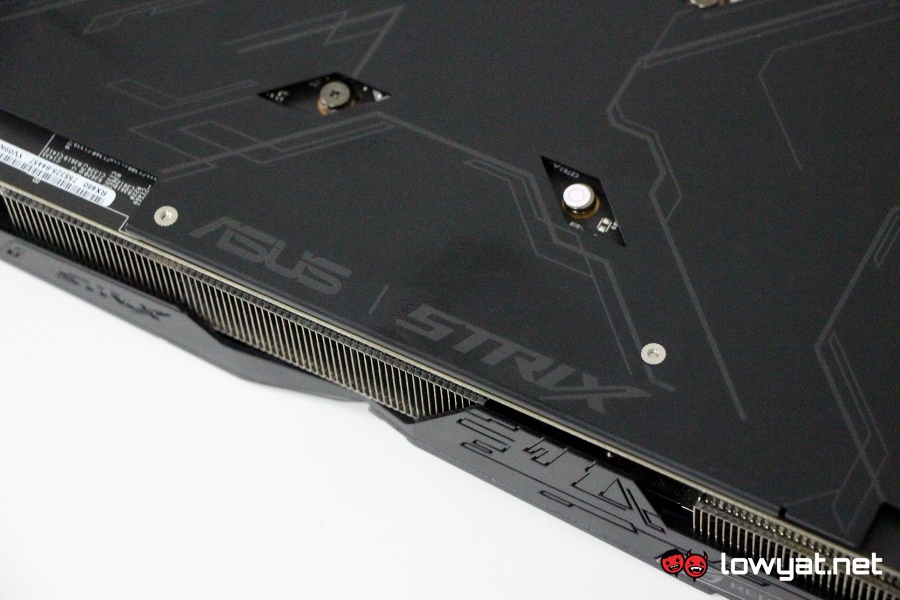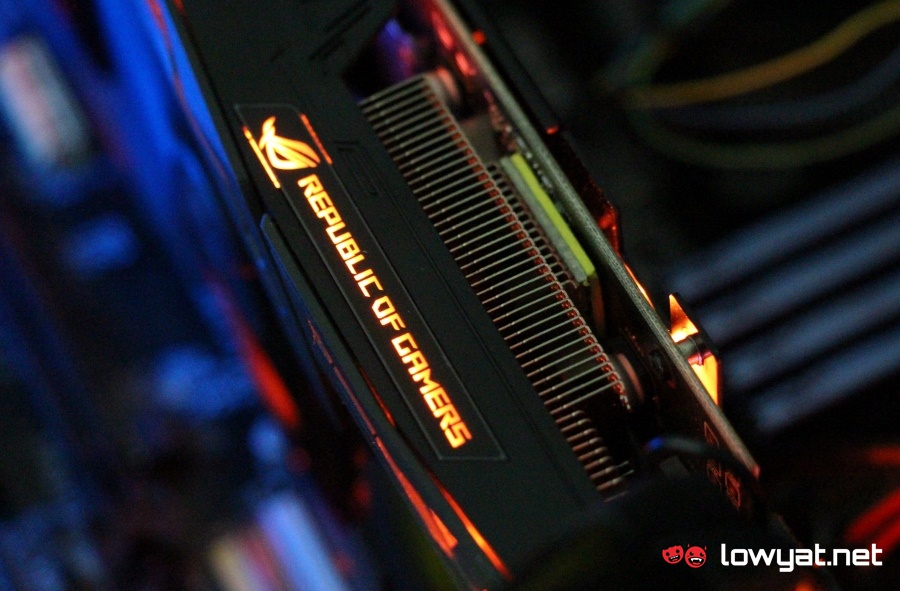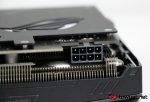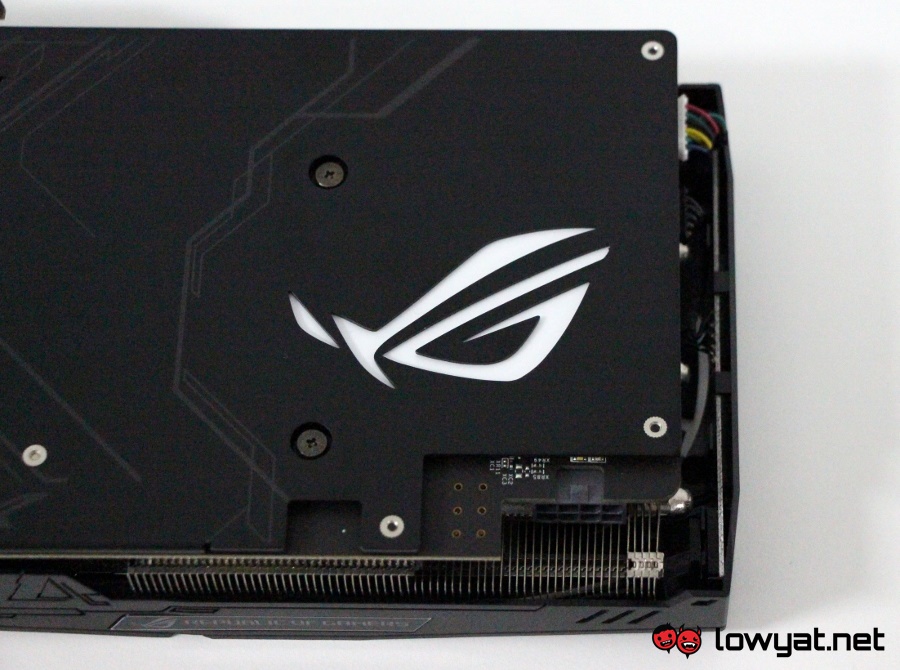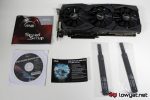Originally conceived as a separate gaming series, ASUS has since merged its Strix brand into the company’s main Republic of Gamers (ROG) family. Not only that, the company has also elevated the brand to a higher level by putting the ROG Strix name on some of its recent premium gaming products.
One such example is the the ROG Strix RX 480 8GB OC graphics card which clearly has premium vibes all over it by having an elaborate thermal solution alongside Aura RGB lighting which is exclusive to ROG Strix cards. Not surprisingly, ASUS also promises that the card performs better than the reference RX 480 card, so we set out to find out.
Design & Software
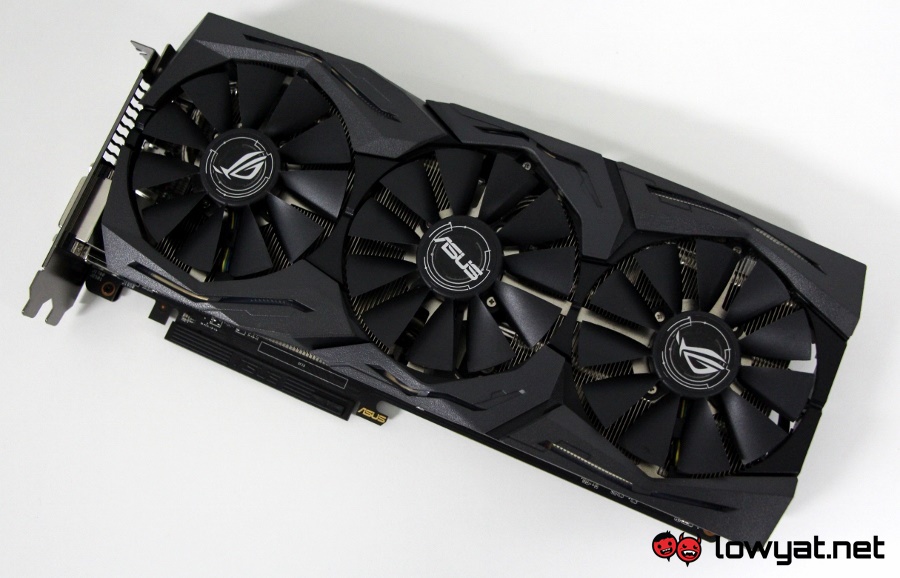
When we first encountered the ROG Strix RX 480 a few months ago during the Malaysian launch of AMD Radeon RX 400 series, we can’t help but notice how bulky this card is even though it not the thickest graphics card around. Clearly, this was due to the DirectCU III thermal solution that ASUS equipped into the card.
Houses in a black-colored metal shroud, the solution is equipped with three massive fans that operate dynamically based on the card’s temperature. At the same time, the thermal solution package also includes a heatsink that contains five heatpipes to further help cool down the card’s Polaris chip – although only three of them are actually in contact directly with the GPU.
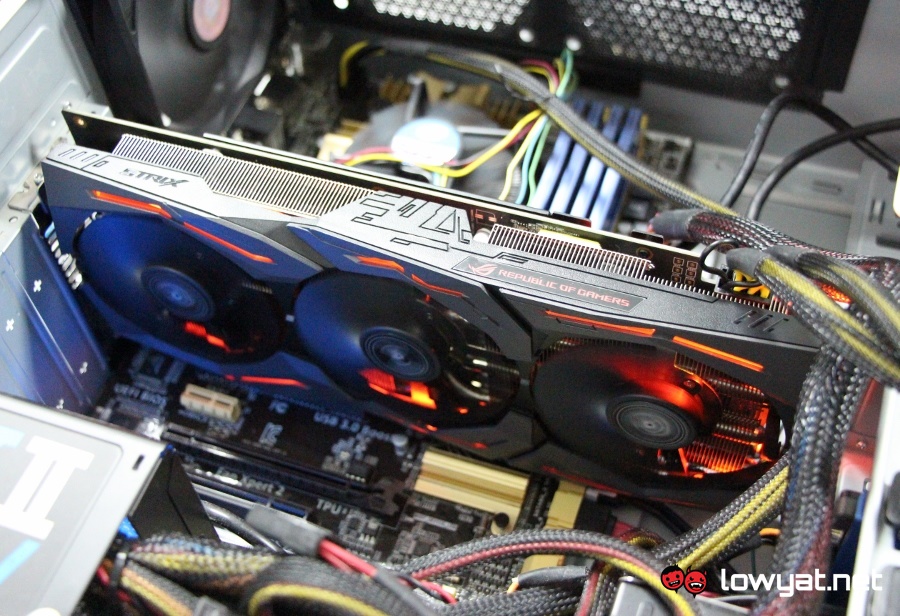
Meanwhile, ASUS has furnished the ROG Strix RX 480 with a set of LEDs on its housing that are customizable via ASUS’ own Aura LED software. These LEDs can be set to represent the card’s temperature or respond to the music playing on the user’s computer, which is rather nifty. This also applies to the ROG logo on the card’s metal back plate and believe us when we say that it is quite a light show whenever the card is in operation.
The ROG Strix RX 480 also comes with several additional features that might be useful for power users out there, such as two 4-pin fan connectors that allows the ROG Strix RX 480 to control other fans within the chassis in order to provide additional cooling. In addition to the LED indicators for the card’s power connector, there are also six voltage monitoring points located nearby.
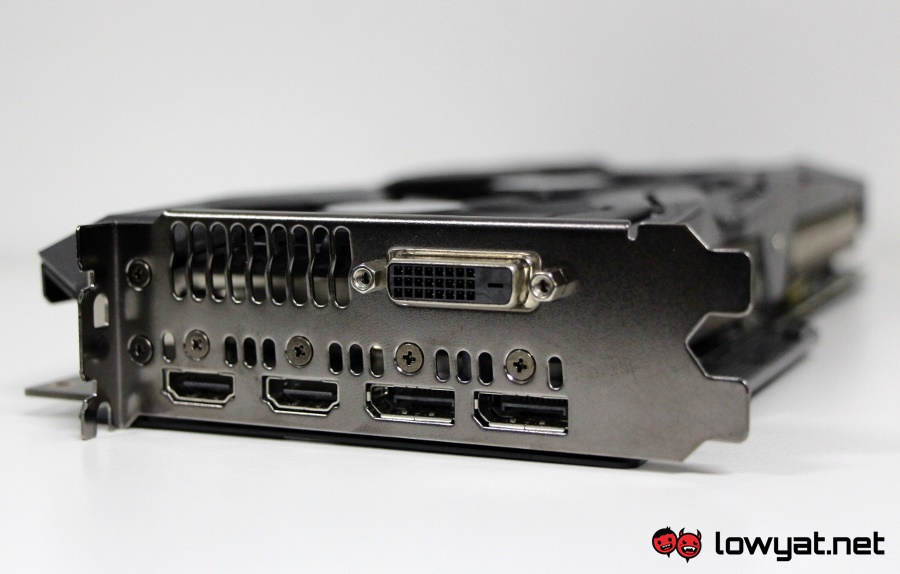
Interestingly, the configuration of output ports for the ROG Strix RX 480 is different than AMD’s reference design. On the ROG Strix RX 480, ASUS took out one DisplayPort out from reference configurations and added one more HDMI port, as well as a DVI-D port. Not to forget, ASUS also chose to implement an 8-pin power connector into the card which is an obvious option given its thermal solution and factory overclock treatment.
Aside from the dedicated Aura LED software, ASUS also provides another software for the graphics car. Called GPU Tweak II, users are able to tweak the card’s performance using the software alongside several additional features including hardware monitoring, custom profiles, and a system booster.
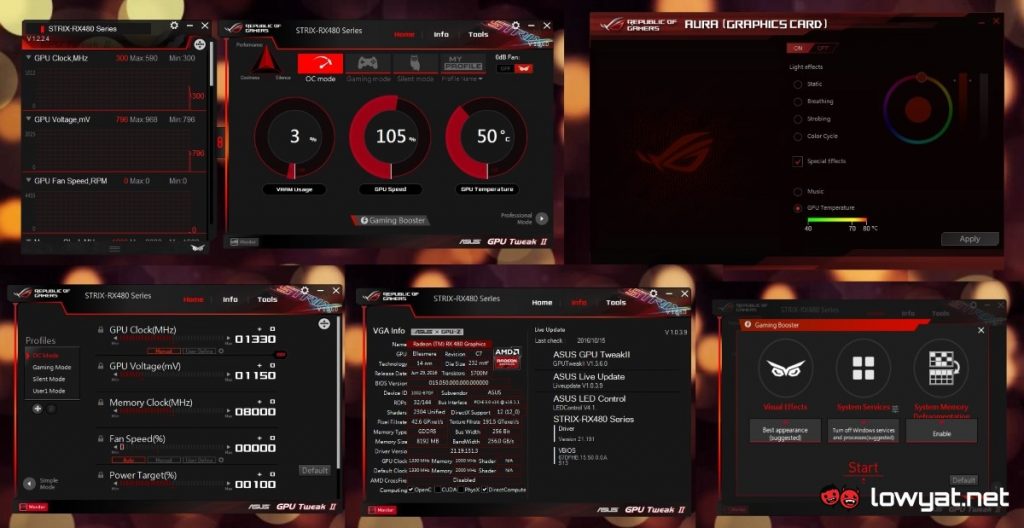
As interesting as the software might be though, we ended up not using GPU Tweak II due to this particular issue. Fortunately, the ROG Strix RX 480 still can be tweaked using AMD’s native Wattman tool within the Radeon Software Crimson Edition just like we did with the AMD Radeon RX 480 reference card.
Review Unit & Test Machine Specifications
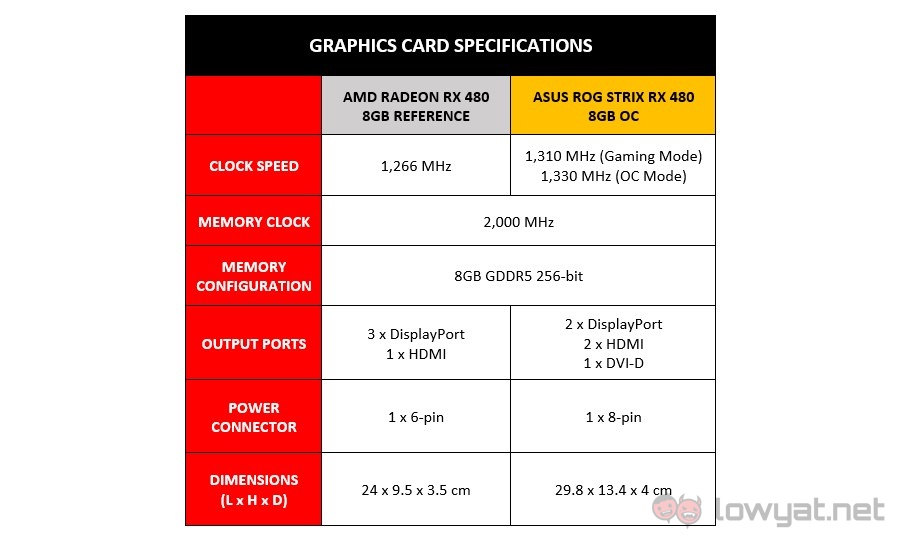
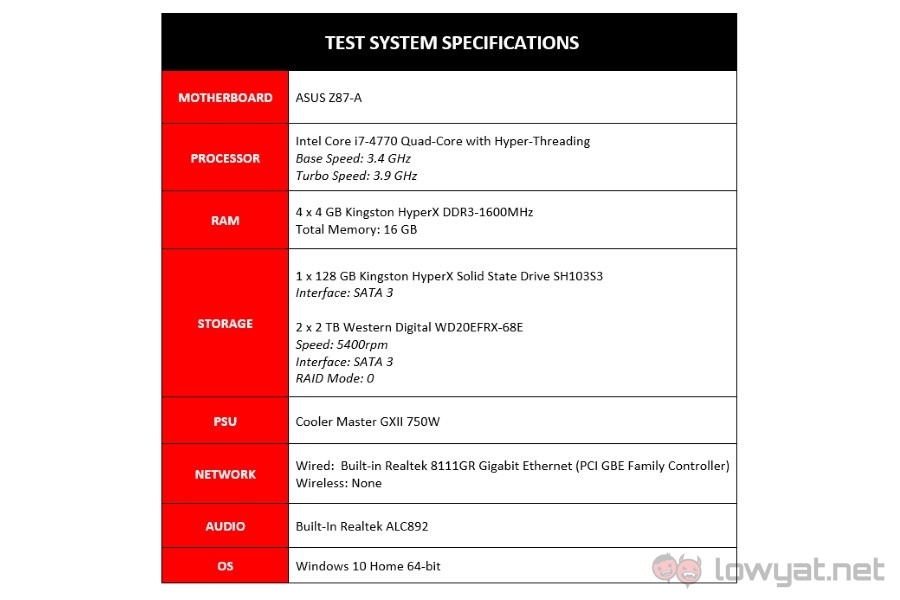 The 28-inch Acer Predator XB281HK 4K Gaming Monitor was also used to test this graphics card.
The 28-inch Acer Predator XB281HK 4K Gaming Monitor was also used to test this graphics card.
Performance
Synthetic Benchmark
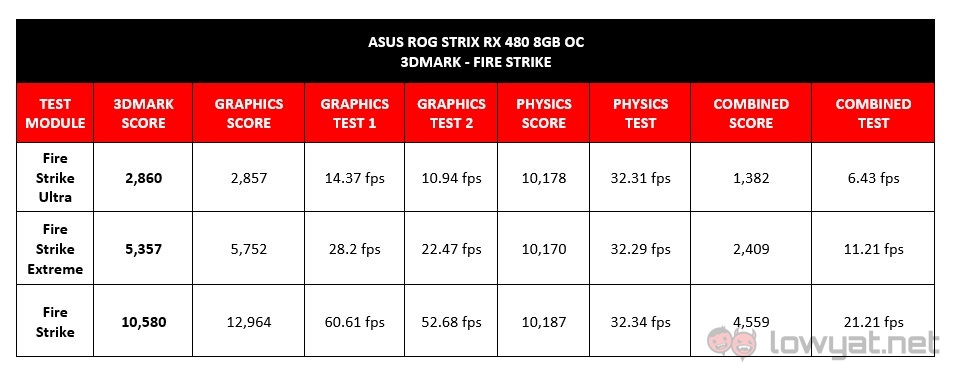 3DMark’s Fire Strike tests are known to be quite punishing on graphics cards, so the results above came as no surprise. That being said, we did notice that the ROG Strix card almost managed to reach 30 fps in the Graphics Test 1 segment of the 1440p Fire Strike Extreme test.
3DMark’s Fire Strike tests are known to be quite punishing on graphics cards, so the results above came as no surprise. That being said, we did notice that the ROG Strix card almost managed to reach 30 fps in the Graphics Test 1 segment of the 1440p Fire Strike Extreme test.
The same case also applies in the Graphics Test 1 portion of DirectX 12-based Time Spy benchmark, which was also performed at 1440p resolution by default.
Meanwhile, the card achieved acceptable performance in the Unigine Valley benchmark which is not far off from the performance that the card is able to deliver on real life gaming workloads.
Gaming
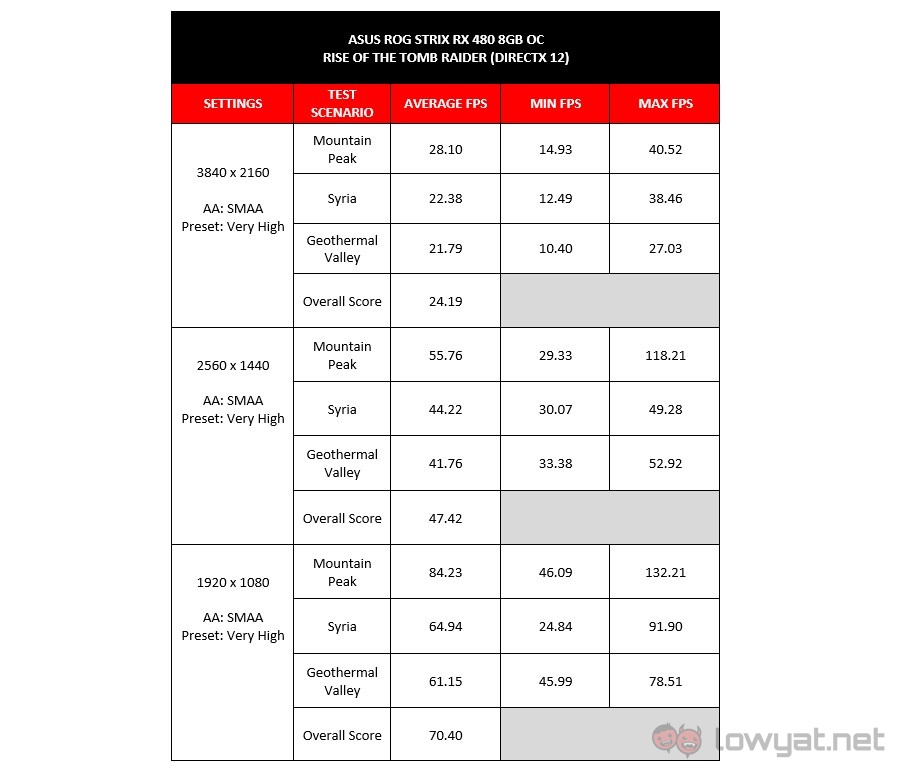 The ROG Strix RX 480 8GB OC might be a premium model – but it is still a RX 480 card. That means the card is still not meant for 4K gaming although it did manage to deliver >30 fps frame rates in some of the games used in this review (albeit with a little adjustment in their graphics settings).
The ROG Strix RX 480 8GB OC might be a premium model – but it is still a RX 480 card. That means the card is still not meant for 4K gaming although it did manage to deliver >30 fps frame rates in some of the games used in this review (albeit with a little adjustment in their graphics settings).
Being an AMD-based card, it reacts quite well to Vulkan API in Doom – to the extent that we can comfortably play the game at maximum graphic settings in 4K resolution – though the average frame rate is still under 60fps. Meanwhile, the ROG Strix RX 480 certainly has no problem to deliver the goods when operated at 1440p and 1080p resolutions.
Overclock
As mentioned earlier, we were not able to utilize the ASUS GPU Tweak II tool due to an issue with the software. To squeeze more firepower from the card, we used AMD’s own Wattman instead. With this tool, we only managed to hit an additional 3% worth of additional clock speed from the card but since the ROG Strix card is already 5% faster than a reference card, we are looking at total performance gain of roughly 8%.
By leaving the memory clock at default, we found that this is the most stable combination for our test system. The tables below show how the gain affects the card’s real life performance over the its factory OC mode:
Power Consumption and Thermals
The power consumption of ROG Strix RX 480 8GB OC might look rather high even at idle but let’s not forget that the card is factory overclocked. Thermal-wise, the DirectCU III solution on the performs quite well in keeping the card within acceptable operating temperatures even when overclocked.
Do note that the fans on the ROG Strix card automatically stop when the card’s temperature is lowered to 49° Celsius, and would activate once the temperature rises to 54° Celsius. That is why the idle temperatures of the card are noted as such in the table above.
Head to head vs Reference Design
From its exterior alone, you’d probably able to guess that the ROG Strix RX 480 8GB OC costs higher than a reference RX 480 8GB card. With an RRP of RM 1,675, it is quite a costly card. That said, market prices for this card is around RM 1,500 if you look around; for comparisons, the reference card can now be obtained for about RM 1,200.
In addition to the clock speed differences above, there are other differences that the RM300 to RM400 gap in price would deliver to the ROG Strix cards owners over the reference RX 480 8GB card:
Competition
Aside from other RX 480 8GB cards in the market (both reference and custom variants), the Pascal-based NVIDIA GeForce GTX 1060 6GB and GeForce GTX 1070 8GB cards both give the ROG Strix RX 480 8GB OC quite a run for its money.
The GTX 1060 6GB is the class rival of the RX 480 8GB, and both cards are generally in the same price range as well (in Malaysia, that is). But despite its price tag and capabilities, the ROG Strix RX 480 8GB OC is not able to easily edge out the reference-level GTX 1060 6GB Founders Edition card that we tested before.
Meanwhile, the GTX 1070 8GB offers more firepower than the ROG Strix RX 480 8GB OC card – which is why the card costs more in the first place. That being said, the price differences them are not that much since you’re able to get a GTX 1070 8GB card for as low as around RM 1,750 these days – making the GTX 1070 more alluring if you have to choose between these two cards.
Conclusion
If you love AMD Radeon cards and are looking to own the highest performance RX 480 cards in the market, the ROG Strix RX 480 8GB OC might be one of your best options. Right out of the box, the card performs better than the reference RX 480 card at much lower temperatures (though it consumers more power due to its overclocked nature).
Not to forget, the Aura RGB lighting does make the card looked better (in our opinion, that is) and hardcore enthuasiasts might appreciate the existence of voltage monitoring points as well as fan headers on the card.
However, its price tag might be a deterrent though especially with the NVIDIA GeForce GTX 1060 6GB and GTX 1070 8GB cards looming around in the background. Tough call indeed.
Pros:
– The DirectCU III solution is good enough to make the card runs at a much lower temperature than the reference RX 480 card.
– Hello DVI-D port.
– Includes additional features that might made hardcore enthusiasts happy.
– Performs well in 1080p and 1440p resolution.
Cons:
– Fitting this card into a smaller case might be tricky
– Noticeably higher power consumption than the reference card.
– Still not quite the card for 4K gaming despite being overclocked.
– Price tag makes it a very tough case when compared to Nvidia GTX 1060 6GB and GTX 1070 8GB cards.
Photo Gallery
Follow us on Instagram, Facebook, Twitter or Telegram for more updates and breaking news.


